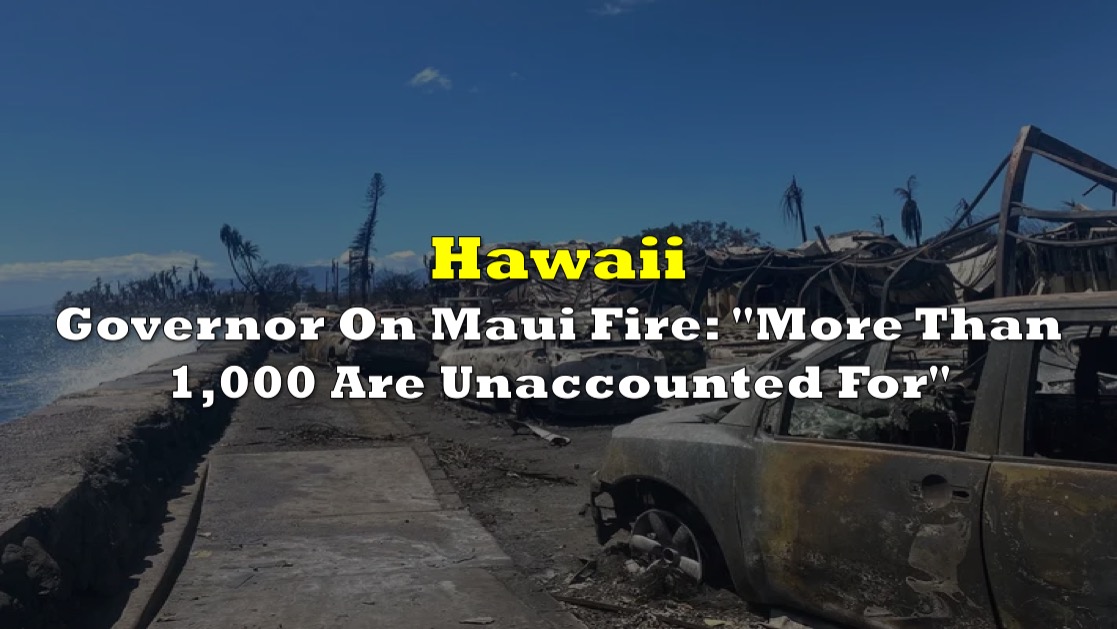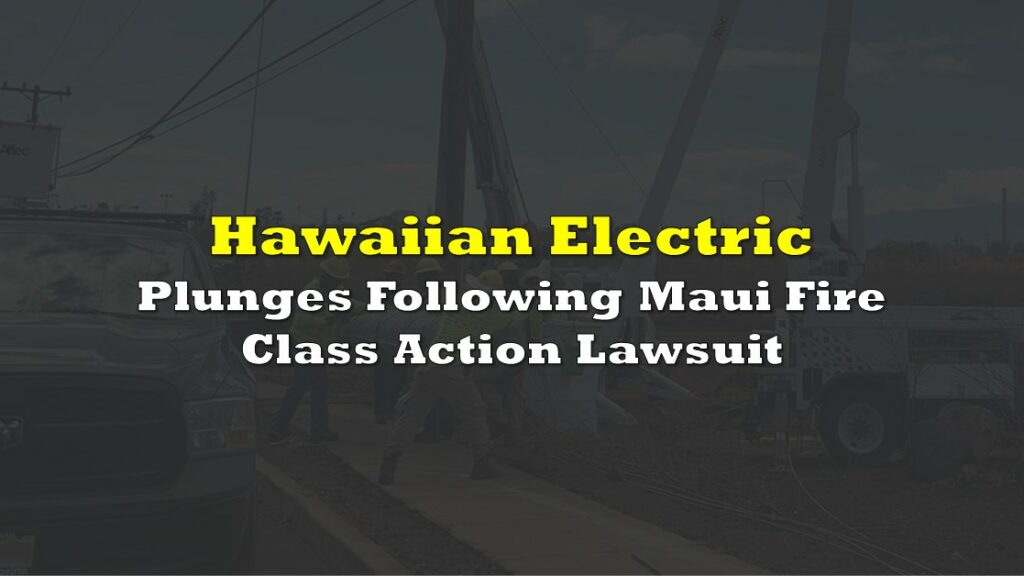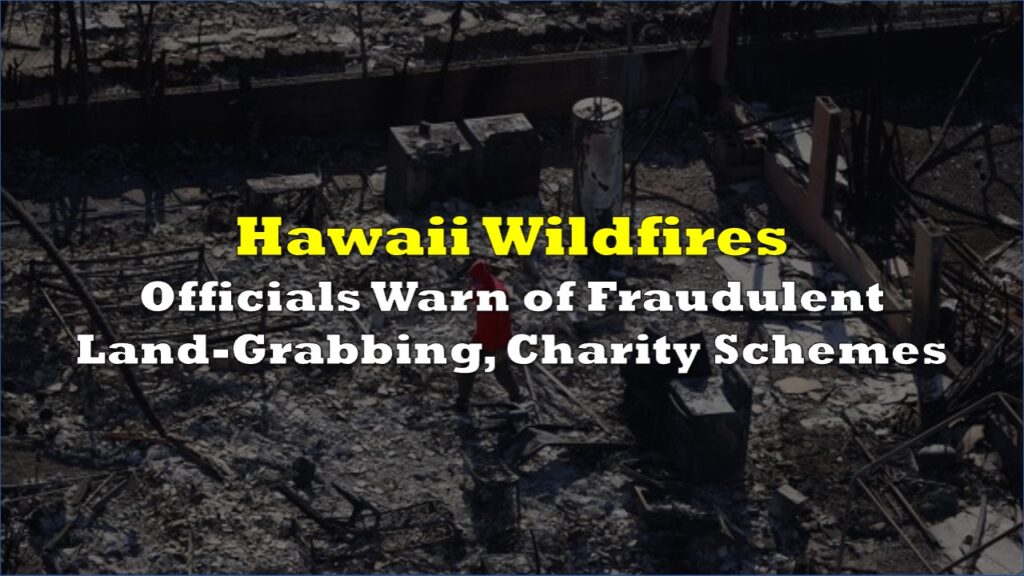Hawaii Governor Josh Green has provided an update on the ongoing search and rescue efforts in the aftermath of the devastating wildfires that swept through Maui County. As the search operations persist, more than 1,000 people remain unaccounted for, emphasizing the gravity of the situation.
“More than 1,000 are unaccounted for, about 1,050. It will take several weeks still. Some of the challenges are going to be extraordinary. As you reported, 85 percent of the land of the impact zone has been covered now by what amounts to an army of search and rescue teams and 41 dogs,” Green said in an interview on CBS News’s “Face the Nation.”
HAWAIIAN GOVERNOR: 1,000 PEOPLE MISSING, MANY OF WHICH ARE CHILDREN ***pic.twitter.com/BACBa35VZG
— The_Real_Fly (@The_Real_Fly) August 20, 2023
The search and rescue teams, comprising a dedicated force of both personnel and specially trained canines, have covered an impressive 85 percent of the affected land area. This significant coverage, however, leaves the remaining 15 percent as a challenging frontier that may require several more weeks to navigate effectively.
Green expressed his understanding that the final phase of the search may not yield the outcomes the community desperately hopes for. Due to the intense heat of the fire, recovering remains in certain cases could prove to be an insurmountable task. He lamented, “There are going to be people that are lost forever.” The collaborative efforts with the FBI and other on-ground teams are aimed at assessing the scope of the missing individuals.
“I wish all the sirens went off”
Addressing the concern over the absence of emergency sirens during the crisis, Green acknowledged the desire for early alerts. However, he highlighted the historical use of sirens primarily for tsunamis and hurricanes, which had led to the decision not to activate them for wildfires. This decision, while contentious, aimed to prevent panic that might have exacerbated the spread of the fire.
“Of course, I, as a person, as a father, as a doctor, I wish all the sirens went off. The challenge that you’ve heard — and it’s not to excuse or explain anything — the challenge has been that historically, those sirens are used for tsunamis. That’s, when I came to Hawaii 23 years ago, was told when I was living down near the shore, so it’s usually tsunamis and hurricanes,” he said.
Green revealed that he believes some of the sirens were not functional, attributing the issue partly to a lack of regular maintenance. He stressed, “We assess every siren across the state on the first of the month, and then we asked people to update them and fix them to their abilities.”
While acknowledging the concerns and criticisms, Green remains resolute in the decisions made during this unprecedented crisis. He empathizes with the public’s desire for swift and effective action while providing insights into the challenging circumstances that officials faced in balancing various emergency responses.
“Something outside my absolute comfort zone”
Green, an ER physician, recounted his bold move from his Capitol office in Honolulu last week, explaining that he felt unheard among his peers and within the governor’s office. Now in his first year of office, the 53-year old Democrat is confronted with the devastating wildfires on Maui.
Scheduled to arrive on Monday, President Joe Biden plans to witness the destruction firsthand and engage with affected residents. Having grappled with two major emergencies within a span of four years in a state with a population smaller than that of Philadelphia, Green is now urgently calling attention to the cascade of global catastrophes that are inundating institutions worldwide.
“I want the world to know that we have to prepare for this,” asserted the governor last week, his voice laden with tension and his eyes marked by fatigue. “We absolutely have to solve these problems before they become crises.”
The wildfires in Hawaii add to the growing roster of climate-induced disasters testing leaders across the nation. In the previous year, Florida’s Governor Ron DeSantis confronted an unprecedented Atlantic hurricane season. Likewise, California’s Governor Gavin Newsom was barely two days into his tenure when the devastating Camp fire claimed 85 lives in 2018. From destructive floods in New York and Vermont to scorching heatwaves in Arizona and Texas, the emotional toll, fiscal burden, and legal repercussions have become recurring challenges as climate change exacerbates extreme weather patterns.
In a state where political decisions often involve delicate balancing among various factions, spanning from progressives to pro-development Democrats and influential labor unions, there is apprehension that the rush to rebuild might compromise hard-won environmental and cultural safeguards. Concerns also loom over the potential economic devastation, further skyrocketing housing costs, and exacerbation of the exodus of middle-class essential workers like teachers, firefighters, and nurses.
The potential for outside investors to exploit the situation worries many, with some fearing that the catastrophe could lead to an influx of wealthy investors from beyond Hawaii’s shores. This tension underscores the inherent conflict in Hawaiian politics, which must grapple with the stunning natural beauty of the islands versus a tourism-dependent economy that sustains its 1.4 million inhabitants.
Even Green himself acknowledges that managing the aftermath of a climate-induced disaster, in a manner that can mitigate future ones, necessitates political skills well beyond those he has previously employed. He reflected, “This is the first time for me as an executive that I’ve been tasked with something outside my absolute comfort zone. COVID was not difficult for me to deal with because I was a health care provider practicing public health.”
Green’s journey to his current role is unconventional. Born in Kingston, upstate New York, and raised in suburban Pittsburgh, his parents attended Woodstock while he was still in utero. He was born with hearing impairment, diagnosed only later in early childhood. Although his hearing was surgically corrected, the residual speech challenges drove his competitive and determined nature. He attributed his drive to overcome these challenges as a major motivation in his life.
After graduating from Swarthmore College in Pennsylvania and then from Pennsylvania State University’s medical school, Green’s last year of training saw him embarking on a medical mission to Swaziland, now known as Eswatini. After completing his residency in 2000, he joined the National Health Service Corps, providing medical care in rural Hawaii.
Over the next four years, he cared for around 8,000 patients, mostly indigenous Hawaiians and Filipinos, as a family practitioner and ER physician on the Big Island. Advocacy for improvements in drug treatment and trauma services eventually led him into politics. He began his political journey by campaigning in scrubs for his legislative district, eventually winning a seat in the legislature. This marked the start of his dual roles as a legislator and an emergency physician that lasted 18 years before his governorship.
While he neither fully aligned with the progressive wing of his party nor became a fixture within the mainstream party apparatus, Green focused on homelessness and public health during his legislative tenure. In 2018, he successfully ran for lieutenant governor, and his pivotal role in managing the COVID-19 pandemic prompted the governor to formally designate him as the pandemic point person.
With data and a whiteboard, Green redefined himself as the face of Hawaii’s pandemic response, advocating for compulsory vaccines for public sector employees, indoor masking in businesses, and quarantines or vaccination proofs for inter-island travel. Despite some minor protests, his state saw relatively little public unrest compared to other states.
His proactive approach garnered him a 63% approval rating in a local news poll in the spring of 2021, nearly three times that of the then-governor. A year later, he won the primary and general elections decisively, securing his role as governor.
Though he’s relinquished his medical practice in favor of volunteering due to a law that bans governors from holding secondary employment, Green has maintained a reputation for rendering medical assistance during emergencies. His leadership came to the forefront when the Maui fire catastrophe struck. Despite being thousands of miles away in Massachusetts, he immediately returned to Hawaii, securing federal aid and providing essential support to displaced survivors.
He has promised action against land speculators and inclusive involvement of locals in recovery efforts. Additionally, he commissioned an in-depth review of the fire’s causes and the emergency response. However, the incident revealed several issues in the response mechanisms, including the failure of outdoor sirens, loss of cellphone connectivity, impassable escape routes, and difficulties in accessing water.
As the challenges continue to mount, complex decisions on preserving Lahaina’s character and even moving power lines underground loom. The past four years have demonstrated to Green that communities no longer have the luxury of error. He expressed regret that certain preventive measures that could have been taken years ago were not, making incidents like the fire less probable.
“I’m mad that we didn’t do some of the things that we could have done three, five, seven years ago to make an incident like this relatively impossible,” he added.
Information for this briefing was found via The Hill, The New York Times, and the sources mentioned. The author has no securities or affiliations related to this organization. Not a recommendation to buy or sell. Always do additional research and consult a professional before purchasing a security. The author holds no licenses.






